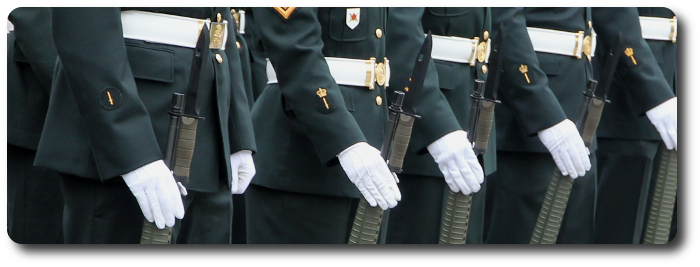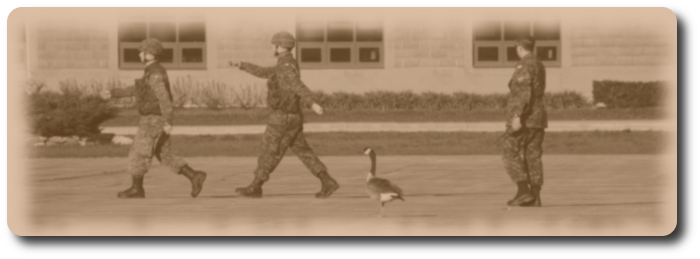Topic: Commentary

Drill
As a rule, soldiers hate drill. This hatred begins in the earliest days of basic training. Hours spent on a parade square, wearing boots not yet broken in, being instructed by some loud and apocryphally impolite instructor who seems intent on creating soldiery through suffering; all these set the conditions for the universal hatred of drill.
And it continues. After basic training the soldier might be subjected to ceremonial parades and the practice they require. These can also require the return to the instructional environment, as new drill movements not imparted during basic training are required for a polished performance. And that necessity only reawakens that visceral hatred of drill developed on the recruit parade ground.
Some parades require few rehearsals and are only annoying in the time they take to accomplish, and the preparation necessary to be in the right uniform. Others, significant ceremonial parades, can require days of practice and rehearsals, sometimes spread out over weeks until the hazy memories of the months before a major event are reduced to that of sore feet, of being told it's not good enough yet, and of more boot polishing. And after finally getting to the point where the sergeant-major is happy, the pain of the experience is renewed when the officers arrive to start learning the parade sequence and their own role on the square.
Many of those who hate drill, at the time or decades later, will argue that there's no military necessity for drill. Drill, they will claim, originated when drill movements were the tactics of the day; and in the mindless military need for tradition and repetition, it simply hasn't died out. Never have they done any military duty that resembled the drill they learned. This last of course, omits the admission that the drill they performed was also a military duty.

The equally eternal arguments in support of drill lean heavily on justifying the need to learn to work together, to follow commands reflexively, and also to have a simple orchestrated method of moving groups of people around in an orderly manner. All of these are sound arguments for some drill to be learned, but they also fall short of promoting the need for all drill in all its painful variations.
Tradition. Customs of the service. The dreaded phrase "we've always done it this way." Hard core traditionalists don't need reasons, it's good enough for them if it resembles what their grandfathers did while serving in the regiment. But those arguments only work on those who have already drunk the same Kool-Aid. Tradition isn't about strictly rigid adherence to unchanging process, it's about upholding principles and "keeping the faith." Traditions can evolve to meet modern necessity and expectation, and "tradition," in itself, makes a poor argument to not examine why we do things the way we do.
A much as old soldiers, and many new ones, profess to hate the drill they did and do, drill remains a part of the military mien. The experienced eye can often pick out a soldier across the room by his or her bearing. A pair or small group of soldiers stands out when they naturally fall into step. Those little things came from the drill they learned, from the conscious, then subconscious, focus on bearing and movement they learned, at least in part, on the drill square.
And the ultimate dichotomy comes out of the fact that many of those old soldiers who decry the drill they had to do, and declaim its irrelevance in a modern army, will also be the first vocal critics when they see new soldiers, with less accomplished drill, performing less well than they had in their day. Soldiers today perform less drill today then their fathers' generation did, but the expectations placed on them to "look like soldiers" doesn't diminish. Old soldiers, and the public at large, still expect soldiers to look like soldiers and drill, when seen, to be performed well. Archaic as it may be to some, drill remains a small measure of perceived professionalism in many armies.
Drill still has its place. The challenge for each new generation of commanders and sergeants-major, is to decide how much is just enough.

